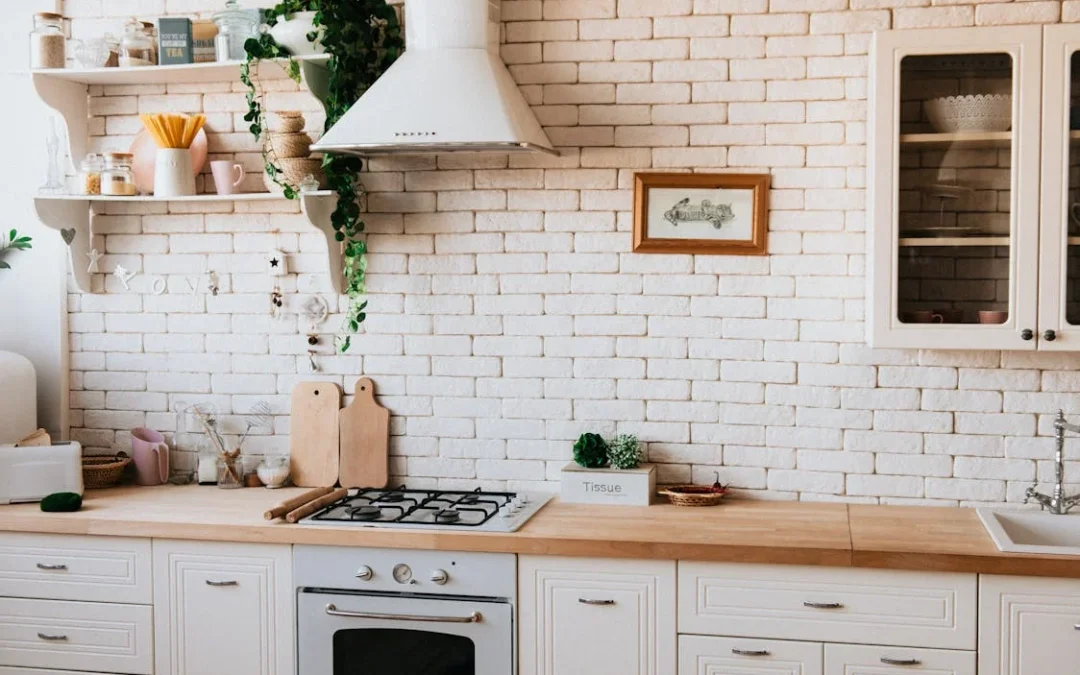Mold in the kitchen can be a sneaky and unwelcome guest, hiding out in damp corners, under the sink, or behind appliances. It’s not just a gross sight; mold also poses health risks and can ruin your kitchen surfaces if left unchecked.
You might be surprised to learn that 47 percent of homes in the US witness mold growth. Globally, 70 percent of homes have some kind of mold in them.
Now, when it comes to mold growth inside the house, especially in your kitchen, you must know how to deal with it. In case you’re not sure how exactly to do so, keep reading and find out.
Spotting the Signs of Mold in Your Kitchen
Ever noticed a musty smell that just won’t go away, no matter how many candles you light? Maybe you’ve seen some black or green spots starting to show up on walls, cabinets, or around the sink.
These are classic signs of mold. Mold thrives in areas with moisture, so kitchens are prime spots for its growth, especially in places where water tends to linger.
Tempted to simply scrub off visible mold? Don’t. Instead, take a closer look at the mold growth.
Often, mold grows in places you can’t see, like behind the fridge or in the corners of your cabinets. Regularly inspecting these hidden areas can help you catch mold early before it becomes a bigger problem.
Clean Up Mold the Right Way
Once you’ve identified mold in your kitchen, it’s time to take action.
Tackling mold isn’t as simple as wiping it down with a wet cloth. Mold spores can spread, and if you’re not careful, your cleanup efforts might make things worse.
Begin by wearing gloves and a mask to avoid breathing in spores, and always keep your kitchen well-ventilated while you work. For smaller mold patches, you can mix a solution of one part bleach to three parts water and gently scrub the affected area.
Bleach kills mold on the surface but remember it won’t reach mold roots if they’re deeper inside walls or flooring. Vinegar is another safe option for tackling mold without strong chemicals; just spray, let it sit, and scrub away.
If mold keeps coming back despite your cleaning efforts, it might be time to bring in professionals who specialize in mold removal. If the mold growth, at any point, spiraled out of control, consider remodeling the entire kitchen.
Remodeling Your Kitchen to Keep Mold Away
If your kitchen has faced recurrent or out-of-control mold growth issues, you might be considering a remodel. Remodeling lets you replace old materials and redesign problem areas, making it easier to keep mold at bay in the future. Plus, who doesn’t love the idea of a kitchen makeover?
Home remodeling projects, especially in mold-prone areas like the kitchen, can be transformative. With help from professional home remodeling contractors, you can upgrade your kitchen with mold-resistant materials, improve ventilation, and enhance the overall design.
Home remodeling services provide expertise on everything, from selecting materials that stand up to moisture to designing layouts that keep airflow consistent. Renovating with these preventive steps in mind will save you the headache of future mold outbreaks.
A full remodel can be a reasonable investment when done right, particularly if you work with contractors who offer competitive pricing. Kitchen projects don’t have to be massive to make a difference. Sometimes, just upgrading cabinets, flooring, and countertops with mold-resistant materials can go a long way.
In areas affected by heavy rainfall, undertaking such kitchen remodeling projects becomes vital. Knoxville, Tennessee, for instance, has recently seen heavy rainfall due to Tropical Storm Helene. This, in turn, might eventually lead to mold growth in many homes across the city. Thus, locals might soon turn to providers offering home remodeling in Knoxville, TN to remodel their kitchens and other affected areas.
According to Preferred Construction, remodeling experts will come in and first have a chat with you. They will discuss your objectives and preferences in particular. After all, as you are remodeling the kitchen, you might want to install features or elements that were previously absent in your kitchen.
Once the initial discussions are done, the experts will proceed to do the needful with your kitchen.
Improve Ventilation and Control Humidity
Want to know the easiest ways to prevent mold from settling in? Simple; keep your kitchen as dry as possible.
Mold loves and thrives on moisture, so any effort to improve ventilation will help keep it at bay. How about an exhaust fan above your stove? Perhaps use a dehumidifier? If none of that, simply keeping a kitchen window open can make a difference.
Also, remember this one thing that everyone often ignores: keep an eye out for any water that might accumulate. Water around the sink? Wipe it. Water under the fridge? Wipe that too? Cooking steam leading to water droplets forming on your overhead cabinets? Wipe up those too.
Dealing with mold in your kitchen is a challenging task. That doesn’t mean that there’s nothing you can do about the mold. With the right steps, you can tackle it head-on and keep it from coming back. After all, no one wants mold as a permanent houseguest in their kitchen.

Recent Comments